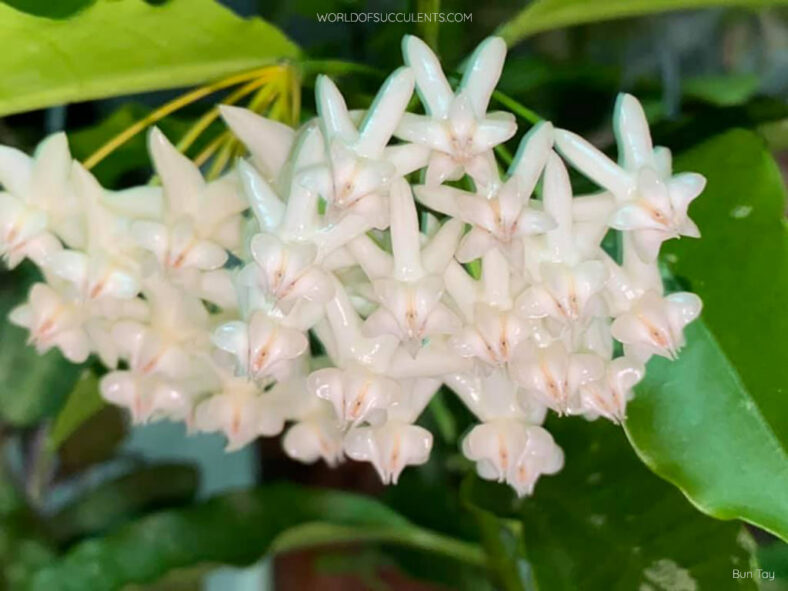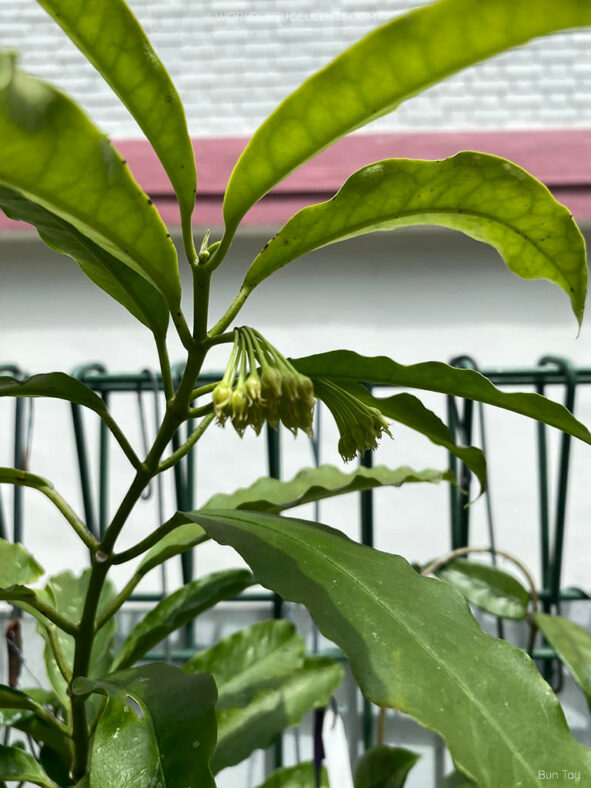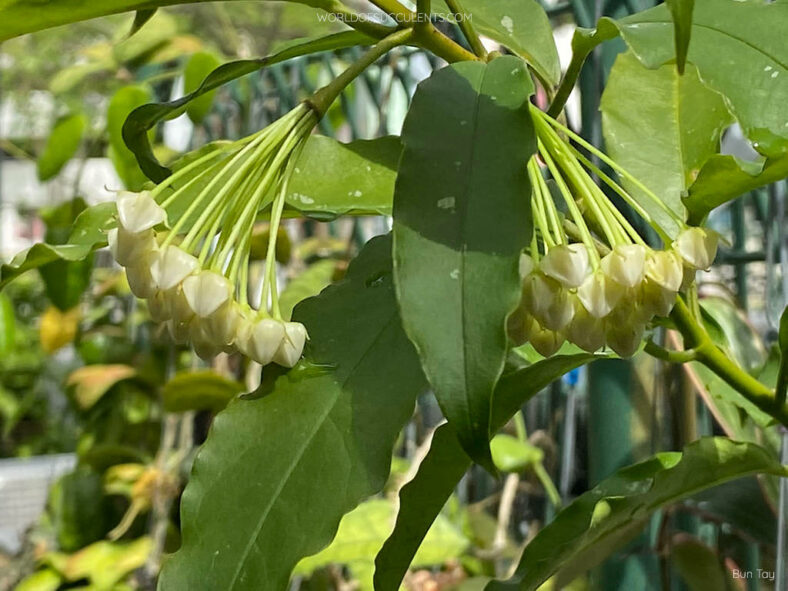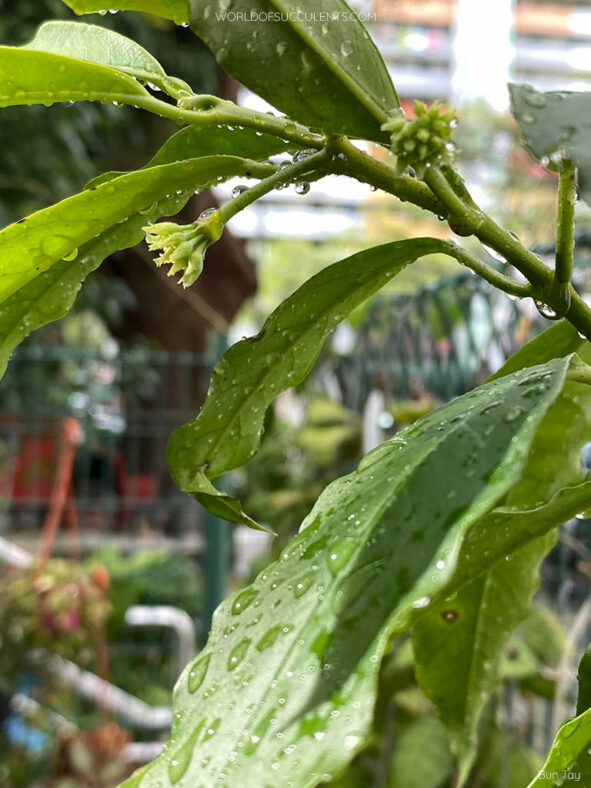Hoya lockii is a species that is closely related to Hoya multiflora. However, it differs from the latter in being pubescent in all parts except for the leaves and the corona. Additionally, its corolla is opalescent white, while the corona of Hoya multiflora is white to yellowish-white with orange on the tips of the lobes.
Scientific Name
Hoya lockii V.T.Pham & Aver.
Scientific Classification
Family: Apocynaceae
Subfamily: Asclepiadoideae
Tribe: Marsdenieae
Genus: Hoya
Etymology
The specific epithet "lockii" (pronounced LOK-ee-eye) honors Professor Phan Ke Loc from the Botany Department of Hanoi University of Science, Vietnam National University.
Origin
Hoya lockii is native to central Vietnam. It grows as an epiphyte on large old trees only in a very restricted area in the A Loui district of Thua Thien-Hue province at an elevation of about 3,280 feet (1,000 m).
Description
Hoya lockii is an epiphytic subshrub with erect stems that bear slightly succulent leaves with a midrib and 6 to 9 arching lateral veins. The stems are dark green with purple marks towards the base, with slightly swollen nodes, and can grow up to 32 inches (80 cm) tall. The leaves are elliptic or narrowly obovate, dark green on top and light green below, measuring up to 5.4 inches (13.5 cm) long and 2 inches (5 cm) wide. They are attached to the stem by a petiole that can reach a length of up to 0.5 inches (1.3 cm). The old leaves have a few scattered purple spots.
In the summer, Hoya lockii produces attractive umbels of 8 to 25 flowers on slender stalks that can grow up to 1.6 inches (4 cm) long. The flowers can reach a diameter of about 0.8 inches (2 cm) and have a white opalescent corolla and glossy white corona with some brown, purple, and pink in the center. The fruits are dark grey-brown, often solitary follicles that can grow up to 5.8 inches (14.5 cm) long and 0.4 inches (1 cm) in diameter.

How to Grow and Care for Hoya lockii
Light: Even if this plant can tolerate lower light levels, it may become weak and leggy if the light is too low, producing fewer leaves and flowers. Therefore, it is best kept indoors in bright, indirect sunlight.
Soil: Well-draining soil that provides excellent aeration and does not hold too much water is most important for growing a healthy plant.
Temperature: Hoya lockii thrives in hot and humid climates, so keep it away from drafty windows and doorways during the colder months. It grows best in USDA Plant Hardiness Zones 11a to 11b, with average minimum winter temperatures ranging from 40 to 50 °F (4.4 to 10 °C).
Watering: This plant is sensitive to overwatering. Soak the soil thoroughly during the spring and summer, but allow it to dry out before watering again. Otherwise, you will increase the risk of root rot, and your plant will not be happy. It is relatively dormant during the fall and winter and needs only moderate watering.
Fertilizing: While Hoya lockii is not a particularly heavy feeder, it can benefit from high-potassium fertilizer at half strength every two weeks during the growing season.
Repotting: As an epiphyte, this plant has shallow root systems and does need a deep container. It also does not require frequent repotting. It prefers to be slightly rootbound, so repot it in spring only if it outgrows its container.
Propagation: Although layering is the easiest way to propagate Hoya lockii, using stem cuttings is the most popular method. Using leaf cuttings can be more challenging, while starting it from seeds is the simplest but the most time-consuming method. For best results, take cuttings only when the plant is actively growing and sow the seeds in spring and summer.
Learn more at How to Grow and Care for Hoya.
Toxicity of Hoya lockii
Hoya lockii is considered non-toxic, so having it around kids and pets is safe.
Links
- Back to genus Hoya
- Succupedia: Browse succulents by Scientific Name, Common Name, Genus, Family, USDA Hardiness Zone, Origin, or cacti by Genus
Photo Gallery
Click on a photo to see a larger version.


